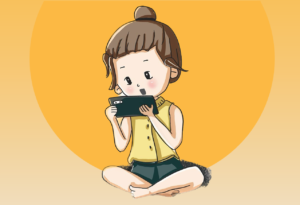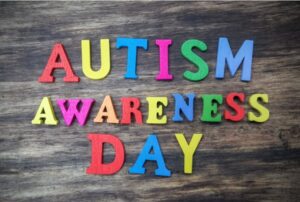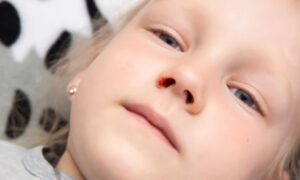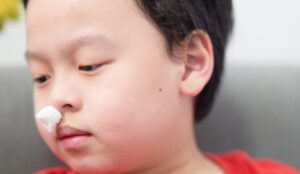ADD (Attention Deficit Disorder) and ADHD (Attention Deficit Hyperactivity Disorder) are common neurodevelopmental disorders affecting children’s attention and behavior. Although they share many similarities, there are also some distinct differences.
ADD (Attention Deficit Disorder)
ADD, or “Attention Deficit Disorder,” primarily manifests as difficulty with attention but does not include noticeable hyperactivity. Children with ADD typically exhibit the following characteristics:
- Difficulty with Attention: Easily distracted, unable to focus on details or complete tasks.
- Forgetfulness and Carelessness: Frequently misplaces items, forgets to do homework or tasks.
- Seemingly Not Listening: Appears not to listen when spoken to, has trouble following instructions.
Children with ADD generally do not show excessive movement or impulsive behaviors; their main feature is attention problems.
ADHD (Attention Deficit Hyperactivity Disorder)
ADHD is an acronym for “Attention Deficit Hyperactivity Disorder,” which includes the attention deficit issues of ADD but also encompasses hyperactivity and impulsive behavior. Children with ADHD often display the following characteristics:
- Hyperactivity: Difficulty sitting still in class or quiet settings, often fidgeting or being overly active.
- Impulsive Behavior: Interrupts others, has difficulty waiting for their turn, makes hasty decisions.
- Difficulty with Attention: Similar to ADD, ADHD children struggle with focus and are easily distracted.
Key Differences
- ADD primarily features attention difficulties without significant hyperactivity or impulsiveness.
- ADHD includes hyperactivity and impulsiveness along with attention deficits.
In modern medicine, ADHD is used as a comprehensive term that covers various types of attention deficit disorders, including the predominantly inattentive presentation (formerly known as ADD) and the predominantly hyperactive/impulsive presentation, as well as the combined presentation (both attention deficits and hyperactivity/impulsivity).
While both ADD and ADHD are related to attention issues, ADD is considered a subtype of ADHD that does not include hyperactivity symptoms. Today, ADHD is the more commonly used diagnostic term encompassing all types of attention deficit-related symptoms.
Treatment and Intervention for Children with ADD and ADHD
Treatment for children with Attention Deficit Disorder (ADD) and Attention Deficit Hyperactivity Disorder (ADHD) usually requires a comprehensive approach, including medication, behavioral therapy, family education, and school support. Here are common treatment methods and interventions:
Medication
Medication is a primary intervention for both ADD and ADHD, particularly for children with more severe symptoms. Commonly used medications include:
- Central Nervous System Stimulants: The most commonly used type of medication, which can elevate levels of chemicals in the brain related to attention and behavior control. Common medications include:
- Methylphenidate (Ritalin)
- Amphetamine (Adderall)
- Methylphenidate Extended Release (Concerta)
- Non-Stimulant Medications: For children who cannot tolerate stimulants or for whom stimulants are not effective, non-stimulant medications include:
- Atomoxetine (Strattera)
- Clonidine
- Guanfacine
These medications primarily work by affecting different neurotransmitters in the brain to improve attention and control impulsive behavior.
Behavioral Therapy
Behavioral therapy is an important non-medication intervention, especially for younger children. Through behavioral therapy, children can learn to control their behaviors and improve social skills.
- Cognitive Behavioral Therapy (CBT): Helps children identify and change negative thinking patterns, leading to improved attention and behavior control.
- Positive Behavioral Support: Uses reward systems, daily task charts, and other tools to encourage rule-following, task completion, and reduction of impulsive behaviors.
- Social Skills Training: Helps children improve their interaction with peers, learn to control impulses, and handle social situations.
Family and School Interventions
- Family Interventions: Parent training and support help family members understand and manage ADHD symptoms, including establishing consistent family rules and behavior management strategies.
- School Support: Development of individualized education plans (IEP) or 504 plans, providing additional classroom support, reducing distractions, and allowing extra break times to help children perform better in the school environment.
As parents and educators, continuously monitoring and supporting the child’s needs, and actively collaborating with healthcare professionals, are key to helping children successfully manage ADD and ADHD. Each child is unique, and finding personalized interventions will lay a solid foundation for their future.
Reference:
Centers for Disease Control and Prevention (CDC) - Provides comprehensive information on ADHD, including symptoms, diagnosis, and treatment options.
CDC: ADHD
American Academy of Pediatrics (AAP) - Offers guidelines on the diagnosis and management of ADHD in children, along with resources for parents.
AAP: ADHD Guidelines
National Institute of Mental Health (NIMH) - Discusses ADHD, its causes, symptoms, and treatment approaches, including medication and therapy.
NIMH: ADHD
Children and Adults with Attention-Deficit/Hyperactivity Disorder (CHADD) - A national organization providing education, advocacy, and support for individuals with ADHD.
CHADD: About ADHD
American Psychological Association (APA) - Offers information on psychological treatments for ADHD, including behavioral therapy and cognitive behavioral therapy.
APA: ADHD Treatment













